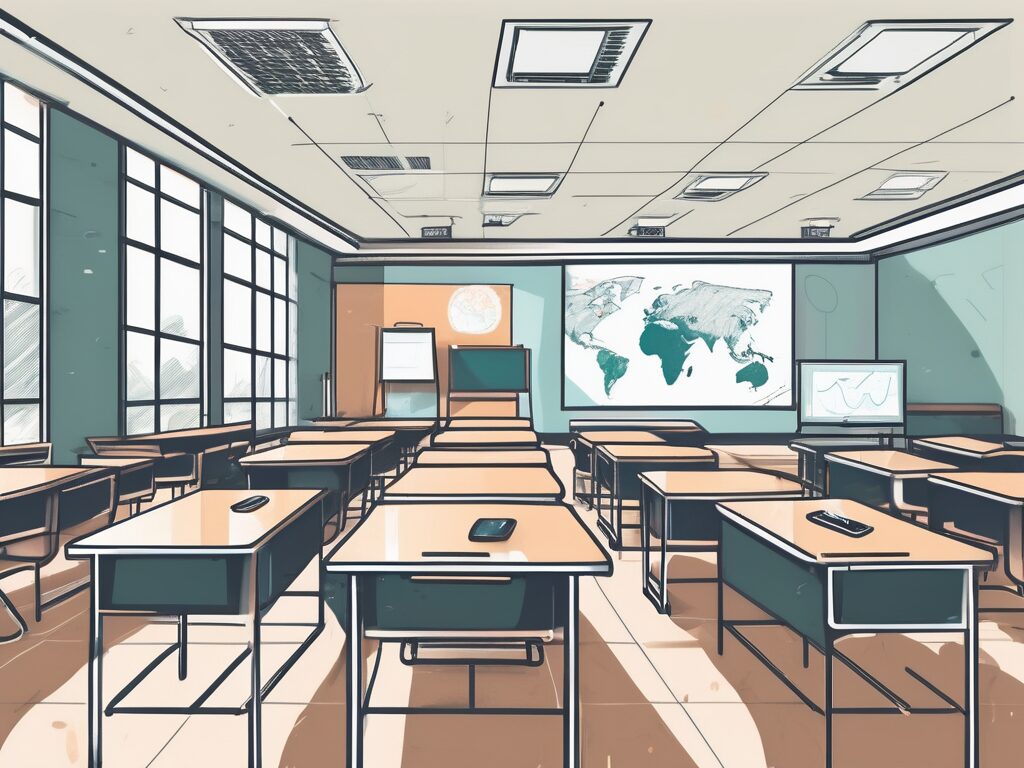The International Postgraduate Certificate in Education (IPGCE) is a globally recognised teaching qualification that equips teachers with the necessary skills and knowledge to teach in international schools. This qualification is particularly valuable for those teaching in China, where the demand for high-quality international education is on the rise. But what does it mean to teach with an IPGCE in China? And how can modern teaching methods be integrated into this context? In this blog, we’ll explore four innovative teaching techniques that can be employed by IPGCE teachers in China.
1. Student-Centred Learning
The first technique we’ll discuss is student-centred learning. This approach places the student at the heart of the learning process, encouraging them to take an active role in their education. Rather than being passive recipients of information, students are encouraged to explore, question, and discover knowledge for themselves.
In the context of an IPGCE in China, this might involve designing lessons that encourage students to engage with the material in a hands-on way. For example, instead of simply lecturing about the Great Wall of China, a teacher might organise a project where students research different aspects of the Wall and present their findings to the class. This approach not only promotes deeper understanding but also helps students develop key skills such as critical thinking and communication.
Comparing Student-Centred Learning with Traditional Methods
Student-centred learning is a departure from traditional teacher-centred methods, where the teacher is the primary source of knowledge and students are expected to absorb information passively. While traditional methods can be effective for conveying factual information, they often fail to engage students on a deeper level or encourage critical thinking. In contrast, student-centred learning fosters a more active and engaged learning environment.
2. Collaborative Learning
The second technique is collaborative learning. This approach involves students working together in groups to achieve a common goal. Collaborative learning can take many forms, from small group discussions to large-scale projects.
For IPGCE teachers in China, collaborative learning can be a powerful tool for promoting cultural exchange and understanding. By working together on projects or discussions, students from different cultural backgrounds can learn from each other and develop a deeper appreciation of diversity. Furthermore, collaborative learning helps students develop important skills such as teamwork, communication, and problem-solving.
Collaborative Learning vs Individual Learning
Collaborative learning differs from individual learning, where students work independently on tasks. While individual learning can help students develop self-reliance and personal responsibility, it can also lead to isolation and a lack of diversity in perspectives. In contrast, collaborative learning encourages interaction and exchange of ideas, leading to a richer and more dynamic learning experience.
3. Technology-Enhanced Learning
The third technique is technology-enhanced learning. This approach involves the use of digital technologies to support and enhance the learning process. This can include everything from online learning platforms to educational apps and virtual reality experiences.
For IPGCE teachers in China, technology-enhanced learning can be a valuable tool for engaging students and making learning more interactive. For example, a teacher might use an online platform to facilitate discussions, share resources, and provide feedback. Or they might use virtual reality to provide students with immersive experiences, such as a virtual tour of the Great Wall of China.
Technology-Enhanced Learning vs Traditional Classroom Learning
Technology-enhanced learning offers many advantages over traditional classroom learning. It can provide students with access to a wealth of resources and learning opportunities that would not be possible in a traditional classroom. It can also make learning more engaging and interactive, helping to motivate students and promote deeper understanding. However, it’s important to remember that technology should not replace traditional teaching methods, but rather enhance them.
4. Inquiry-Based Learning
The fourth and final technique is inquiry-based learning. This approach involves students conducting investigations to answer questions or solve problems. The teacher acts as a guide, providing support and feedback as students explore and learn.
In the context of an IPGCE in China, inquiry-based learning can be a powerful tool for promoting critical thinking and problem-solving skills. For example, a teacher might pose a question or problem related to Chinese culture or history, and then guide students as they conduct research, formulate hypotheses, and draw conclusions.
Inquiry-Based Learning vs Direct Instruction
Inquiry-based learning differs from direct instruction, where the teacher provides information and students are expected to absorb it. While direct instruction can be effective for teaching factual information, it often fails to engage students or promote critical thinking. In contrast, inquiry-based learning encourages students to take an active role in their learning, fostering curiosity, creativity, and critical thinking.
In conclusion, modern teaching methods such as student-centred learning, collaborative learning, technology-enhanced learning, and inquiry-based learning can be powerful tools for IPGCE teachers in China. By integrating these techniques into their teaching, teachers can create a dynamic and engaging learning environment that promotes deep understanding and develops key skills. So, whether you’re a seasoned IPGCE teacher or just starting your journey, consider how these techniques could enhance your teaching practice.
Transform Your Teaching Career with iPGCE
Ready to elevate your teaching methods and advance your career in the international education landscape? Join the UK’s #1 Teacher Training Course, the iPGCE, and overcome the barriers that hold back many aspiring educators. With our program, you’ll not only meet the stringent qualification requirements of international schools but also enjoy a significant boost in interview callbacks, promotion rates, and salary potential. Connect with a global professional community, gain a deep understanding of international curricula, and benefit from flexible online study options that fit your busy schedule. Don’t let inadequate credentials or isolation limit your professional growth. Join the iPGCE program now and become 65% more adaptable in the ever-evolving world of global education.

